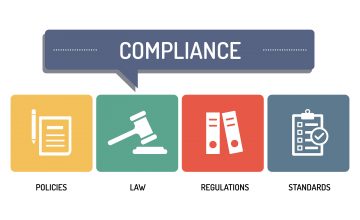Practical Interpretation of AODA Information and Communications Standards for Posted Content
February 9, 2016
Overview
We receive a large volume of questions on a regular basis about what format(s) need to be posted on websites (internal and external) to be compliant with the AODA Information and Communications Standards (INFO COM).
Our goal is to help organizations understand the AODA accessibility standards for implementation purposes. This document provides a practical interpretation of the implementation of INFO COM, Sections 12 and 14. It is based on our extensive experience and the practical realities of implementing the legislation cost-effectively. To learn more about the legislation, it can be found online at www.ontario.ca/laws/regulation/110191.
Single or Multiple Formats for AODA Compliance
Clause 11 (1) of the Standards indicates that upon request, obligated organizations must “provide or arrange for the provision of accessible formats and communications supports for persons with disabilities” and Clause 11(2) requires the obligated organization to consult with the person making the request in determining the suitability of an accessible format or communication report.
This means that if a person with a disability contacts an organization, the format of the accessible version should be discussed with the individual. For example, if they use a computer, an accessible PDF or HTML would be suitable. If they don’t have a computer and use Braille, a Braille version would need to be provided.
However, for information that is widely distributed by the organization such as content posted on websites, it’s not practical or in most cases, even possible to have all the different types of formats available for each document. Websites are electronic; people who access them must have a computer or hand held device that has internet access. People who need hard copy braille are not going to find braille versions posted online – it isn’t physically possible. Accordingly, this suggests the intent of the legislation isn’t to post all accessible formats online. Furthermore, there isn’t any specific guidance on which accessible format is required. This implies organizations can use their professional judgement to determine which format best suits their requirements as well as the users of the content as long as it is accessible and compliant.
Does an organization need to post HTML and accessible PDFs to be compliant, or even both of these formats plus Word and large print? No. Providing one accessible format that is complaint with WCAG 2.0 AA means the content is accessible. If the content is accessible, it meets AODA requirements written in the Standards.
How to Choose the Right Accessibility Format
How does an organization choose what format to use for posted content? In our experience, HTML and accessible PDFs provide the highest standards of accessibility, compliance and usability. Furthermore, accessible PDFs sustain the design of the document completed by the author. Other formats such as WORD can be accessible however there is no structure to the document. The same applies to large print documents. Why spend money designing a fantastic document and then remove the structure for accessibility purposes?
The type of content is important to consider. Not everything needs to be in one format or the other, so choose the right format for the type of content. Users are not going to read a 300 page report on a mobile device, so repurposing the same content to enable this doesn’t make practical or financial sense.
We recognize that end users may have personal preferences, however if they really don’t want the format the organization provides, they will invoke their right to request another format. We never recommend to our clients that they post all types of electronic accessible formats anticipating that end users may have a preference. It is just not cost-effective to do so.
So if one accessible format is enough, what criteria should an obligated organization consider? These are the criteria we suggest:
- Relative price to make the content accessible – is one format more expensive than the others?
- Has the document been designed or is it straight text?
- Is it a form or static document?
- Internal resources – what capacity and skills does an organization have to complete the accessibility? Is there sufficient capacity internally or externally to complete the accessible format by internal deadlines?
Each of these criteria can be further explored. It is likely the answer may be different depending on the document. Accessibil-IT is happy to assist organizations determine which format is best suited to them.
Please contact us at info@accessibilit.com


